Sigiriya’s rock fortress may draw the crowds, but it’s the untold stories of locals like Upul — a young man quietly redefining resilience and hospitality in the shadow of this historic marvel — that truly bring the region to life.
Sigiriya is a name that echoes across travel itineraries, celebrated for its towering rock fortress and rich history. But beneath the tourist lens lies a different story — one of people like Upul, a 26-year-old local whose life is shaped by the same soil that holds the ruins of kings.
I met Upul while wandering through Sigiriya, and his story unfolded against a backdrop of struggle, pride, and perseverance. From losing his life savings to a con artist to rebuilding his family’s home from scratch after unimaginable loss, Upul embodies the quiet strength of a community often overshadowed by the grandeur of its surroundings.
This is a glimpse into Sigiriya’s local life — a world far removed from glossy brochures, but one that holds its own kind of beauty.
Sigiriya’s Ancient Rock Fortress: A Historic Perspective
Sigiriya is one of Sri Lanka’s most iconic landmarks, often called the "Eighth Wonder of the World." This towering rock fortress rises 200 metres above the surrounding plains, drawing visitors with its ancient frescoes, intricate gardens, and the remnants of a palace once built by King Kassapa in the 5th century CE.
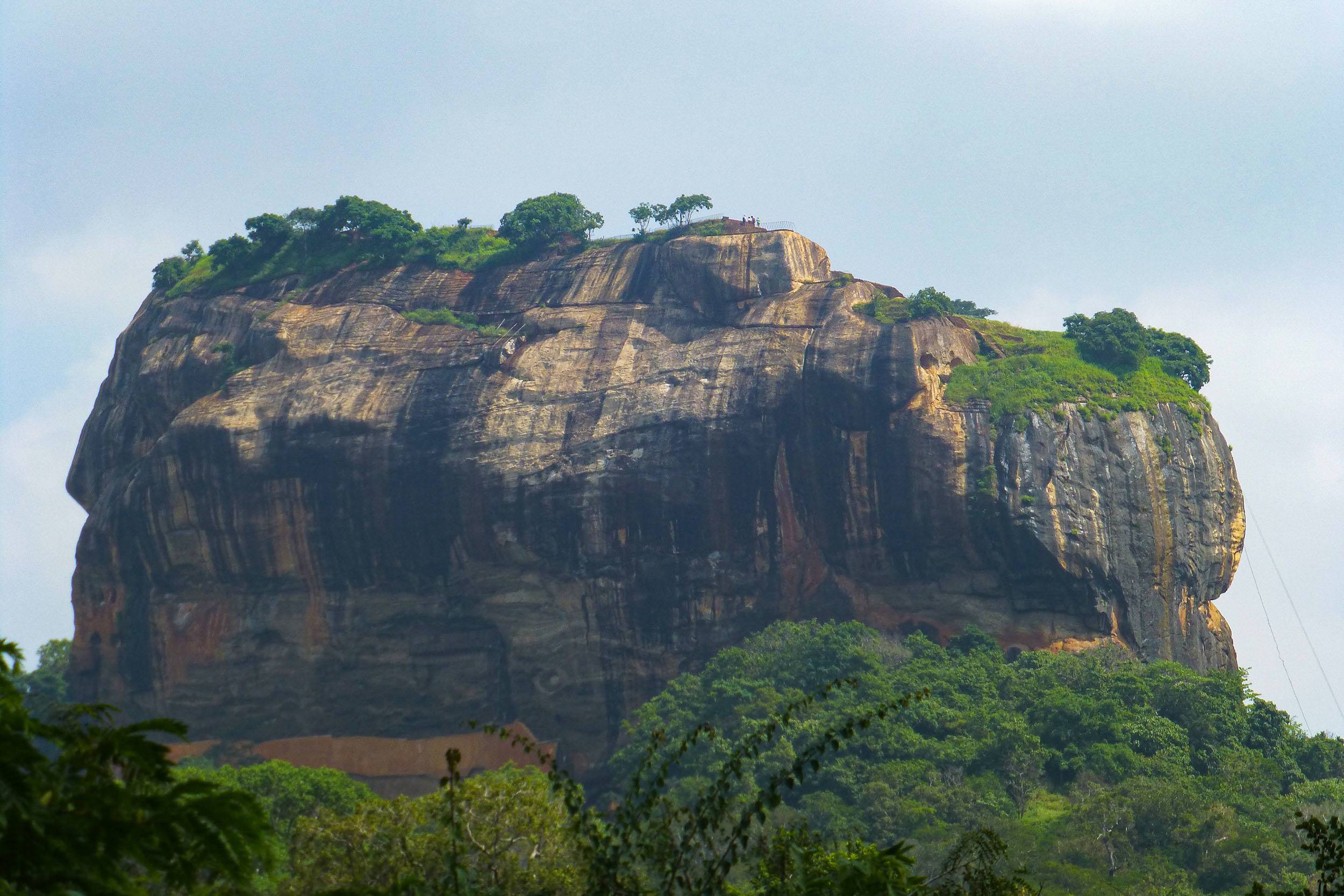
When I first arrived in Sigiriya, the fortress dominated the horizon, its earthy tones blending with the emerald landscape below. Climbing the steep stairway to the top, I imagined what life might have been like for those who lived in its shadow centuries ago — nobles enjoying the luxuries of the palace while the villagers toiled below.
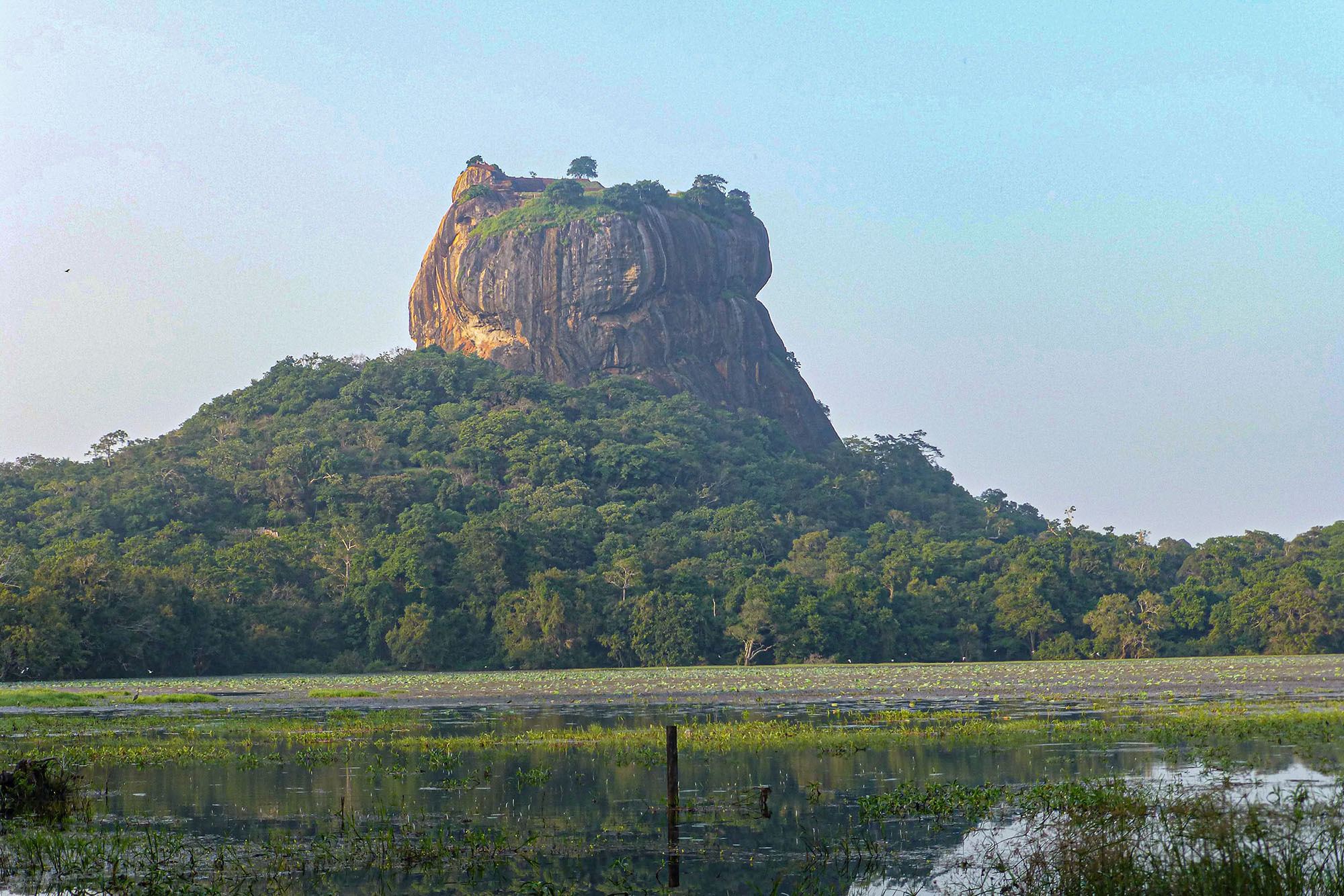
For locals like Upul, this history is part of the identity of Sigiriya. The rock fortress represents a shared cultural heritage, even as life today presents challenges vastly different from the politics of an ancient kingdom.
Life in Sigiriya Today: Meeting Upul
Beyond the fortress, Sigiriya’s landscape is a patchwork of vibrant rice paddies, dense jungle, and winding dirt roads. It’s a place where ancient history meets rural simplicity, where the rock itself is both a cultural emblem and a daily reminder of the village’s connection to the past.
After exploring the remnants of Sigiriya’s ancient palace and taking in the 360-degree emerald panorama from its summit, I descended slightly, finding a quiet spot to rest. The midday breeze carried a voice from behind me: “Where do you come from?”
I turned to see a young man with a calm, friendly demeanour. His chocolate-brown curls framed a face that exuded sincerity, with almond-shaped eyes that were both perceptive and inviting. He stood there, holding a small bundle in his hands.
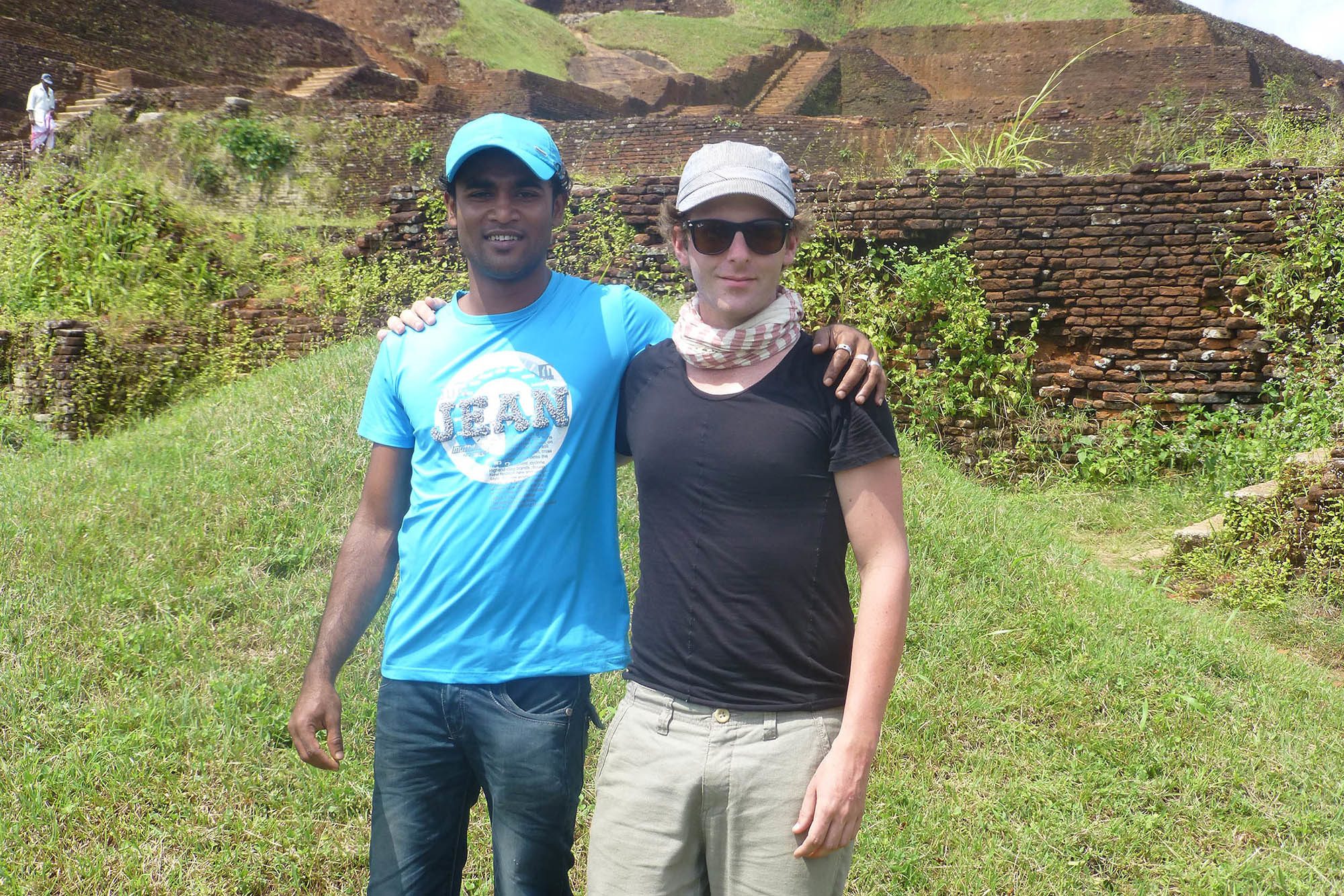
“You look tired,” he said with a smile, offering me a piece of garlic waidi wrapped in a scrap of cloth. “Here, this will give you energy.”
Caught off guard by his generosity, I hesitated for a moment, but his gentle persistence encouraged me to accept. As I sat down beside him, his easy manner immediately put me at ease, dismantling the walls I instinctively put up when meeting locals abroad.
Upul’s voice carried a quiet warmth as he spoke, and I quickly realised this wasn’t the usual scripted interaction I’d come to expect as a traveller. “Sigiriya is my home,” he shared, “but I come here to think — to see things clearly.”
His words felt genuine, and his presence disarmed my scepticism. In those moments, sitting beside him on the rock, I sensed a rare authenticity. The exchange wasn’t just about food or small talk — it was an unguarded connection that transcended the typical boundaries of traveller and local.
As the sun dipped a little lower in the sky, Upul extended an unexpected invitation: “You should come to my home,” he said, his tone earnest but casual. It wasn’t the kind of offer extended to every foreigner, and I could tell it carried meaning.
I agreed, curious to learn more about his world and the life he lived beyond the well-trodden paths of Sigiriya.
Exploring Sigiriya Through a Local Lens
Sigiriya is more than its rock fortress. The surrounding villages offer a deeper, unfiltered understanding of life in Sri Lanka — a world shaped by both hardship and quiet joys. My time with Upul revealed this local perspective, rooted in unpretentious hospitality and a strong connection to the land.
When I arrived at his family’s home later in the afternoon — a simple besser block structure surrounded by banana trees — his mother greeted me warmly, her hands busy preparing tea. The house represented a triumph for the family, who had once lived in a crumbling clay shack. “It’s not much,” Upul said, smiling shyly, “but it’s ours.”
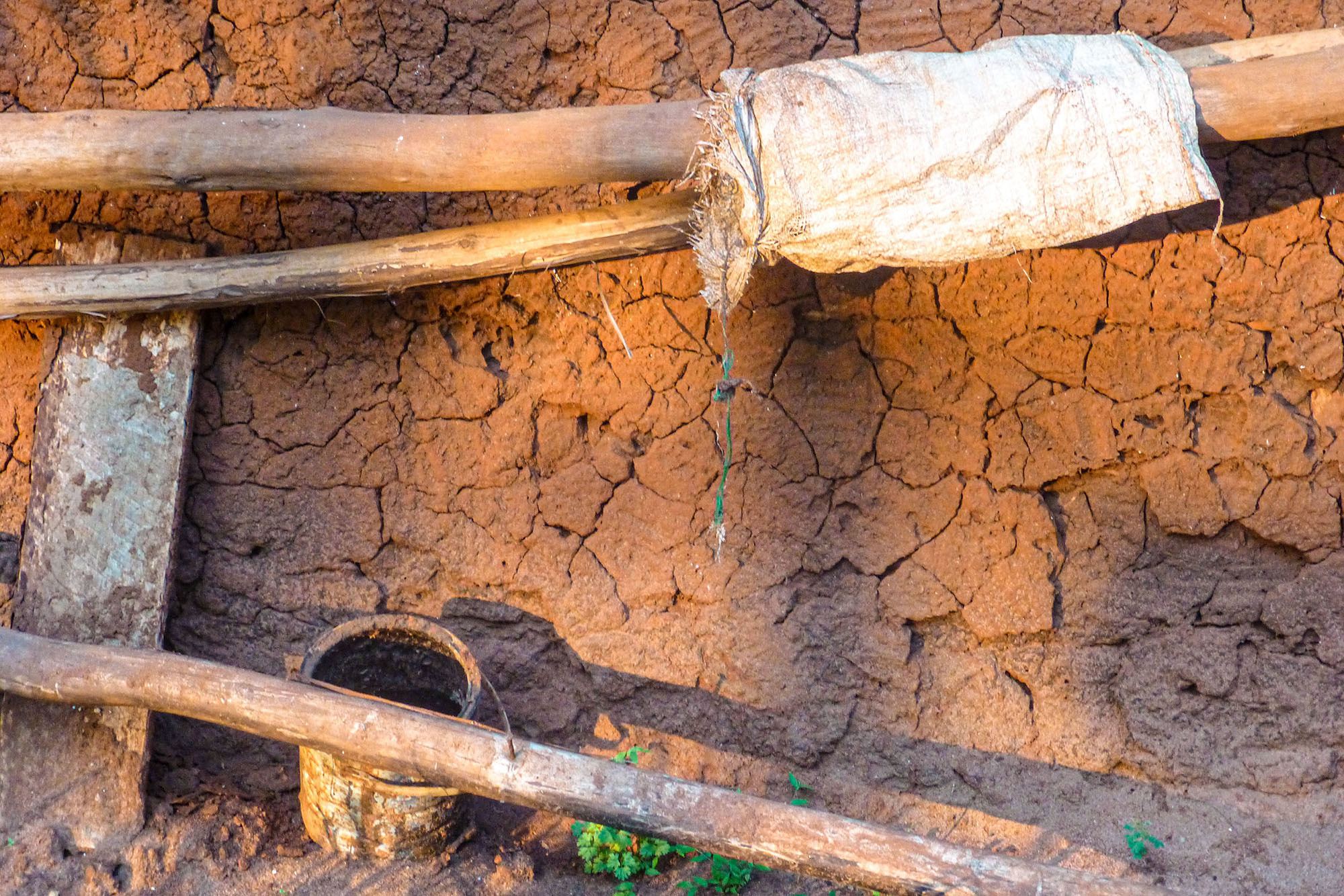
The modest home Upul built is a far cry from the clay shack his family once lived in. Like many rural Sri Lankan homes, it has no air conditioning and relies on a thin sheet of metal for a roof.
Meals are simple but heartfelt — local staples like dal curry or asmi prepared with care and shared generously, even when resources are limited. This humble culture is a source of pride for Sigiriya’s people.
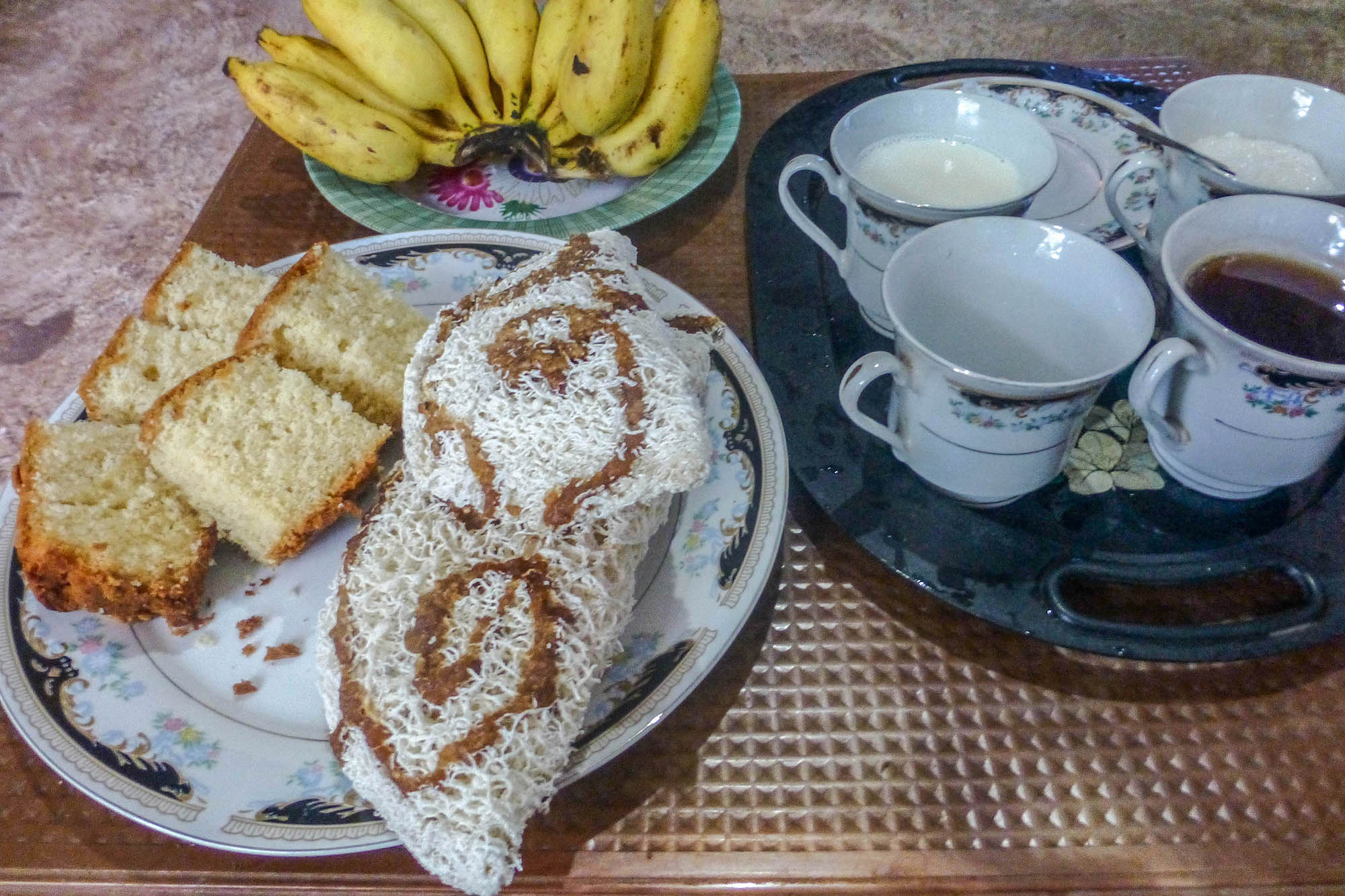
They served me a feast of sweet asmi and locally grown tea, despite their humble resources. Their generosity wasn’t grand, but it was deeply felt, a reflection of their values, and a contrast to the material wealth so often equated with hospitality.
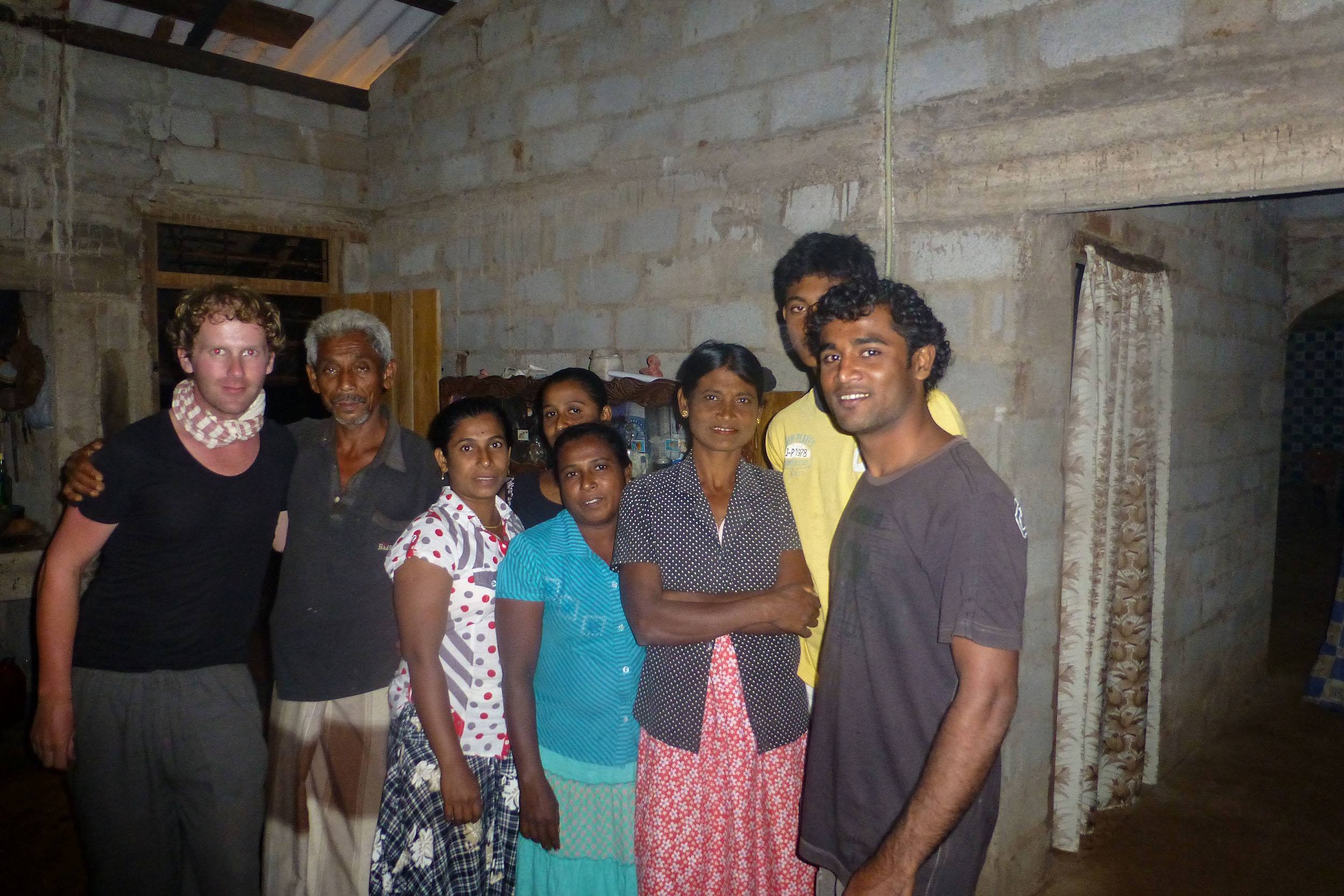
Later, Upul mentioned a secret waterfall — a hidden gem known only to a handful of villagers. With a mischievous grin, he declared it was time to see it for myself.
We piled onto his aging motorbike, me precariously wedged between Upul in front and his friend behind. The bike groaned under the weight of all three of us as it navigated Sigiriya’s pothole-riddled dirt roads. By the time we arrived near the jungle, the roar of cascading water filled the humid air, guiding us to our destination.
At the waterfall, Upul and his friend wasted no time stripping down and diving in. I hesitated. My white underwear, glaringly unsuited for the occasion, felt like a beacon of self-consciousness.

But as the cool mountain water beckoned, I cast aside my hesitation and waded in, feeling the chill wash away not just the day’s heat, but also my lingering embarrassment. Standing beneath the cascade, I let the droplets cleanse me, a natural baptism of sorts.
The return journey was equally unforgettable. With no working headlight, I held a one-watt torch over Upul’s shoulder. It dimly lit our way over gravel roads in the dark. Absurd as it felt, the moment added a touch of humour to an extraordinary day.
Spending time with Upul and his family wasn’t just about seeing Sigiriya through local eyes — it was about experiencing the raw, unembellished beauty of their daily lives. I even joined them in preparing dinner, sitting on the kitchen floor as we chopped vegetables and shared stories. This was a side of Sri Lanka that most visitors never see, yet one that lingers far longer than the memory of ancient ruins or tourist trails.
Local Tips and Advice for Visiting Sigiriya
- Respect the Pace of Local Life: Life in the villages around Sigiriya moves at a slower, more deliberate rhythm. Embrace it by taking your time, greeting people with a smile, and perhaps learning a simple “Ayubowan” (hello) to show respect.
- Dress Modestly in Villages: Rural areas around Sigiriya tend to be more conservative. Choose clothing that covers shoulders and knees, especially when visiting temples or entering someone’s home, as a gesture of cultural sensitivity.
- Support Local Businesses: Opt for family-run restaurants, handcrafted goods, and local guides. Your support directly impacts the community and helps preserve their way of life.
- Be Patient with Language Barriers: English isn’t spoken by everyone, but a little patience goes a long way. Simple phrases (like “Istuti” [thank you] in Sinhala) or even gestures can bridge the gap, and locals will appreciate the effort.
- Bring a Small Gift or Token: If you’re invited into someone’s home, a small token like fresh fruit or sweets is a thoughtful gesture that’s always warmly received.
- Don’t Haggle Excessively: Bargaining is part of the culture, but do so with kindness. A small extra payment often makes a bigger difference to them than it does to you.
- Respect Sacred Sites: Sigiriya’s temples and ruins hold deep cultural significance. Be mindful not to climb on sacred structures, speak loudly, or leave behind litter.
- Ask Before Taking Photos: While the landscapes are captivating, it’s polite to ask for permission before photographing locals, especially in personal or religious settings.
Poverty and Resilience in Sigiriya
While Sri Lanka is known for its natural beauty and cultural treasures, it’s impossible to ignore the struggles many locals face. Upul’s story reflects the resilience of those living in Sigiriya and beyond — working tirelessly to create a better life despite limited opportunities.
Upul’s return to Sigiriya from the southern coast was born of necessity. He had been working as an Ayurvedic masseuse, saving to build a better future for his family, when an acquaintance promised him opportunities in Dubai.
Trusting this friend, Upul handed over his $2,500 life savings, only to be cruelly deceived. With his dream of supporting his family abroad shattered, fate dealt another blow weeks later when the 2004 tsunami devastated Unawatuna, destroying the hotel where he worked and leaving him no choice but to return home with only a few possessions.
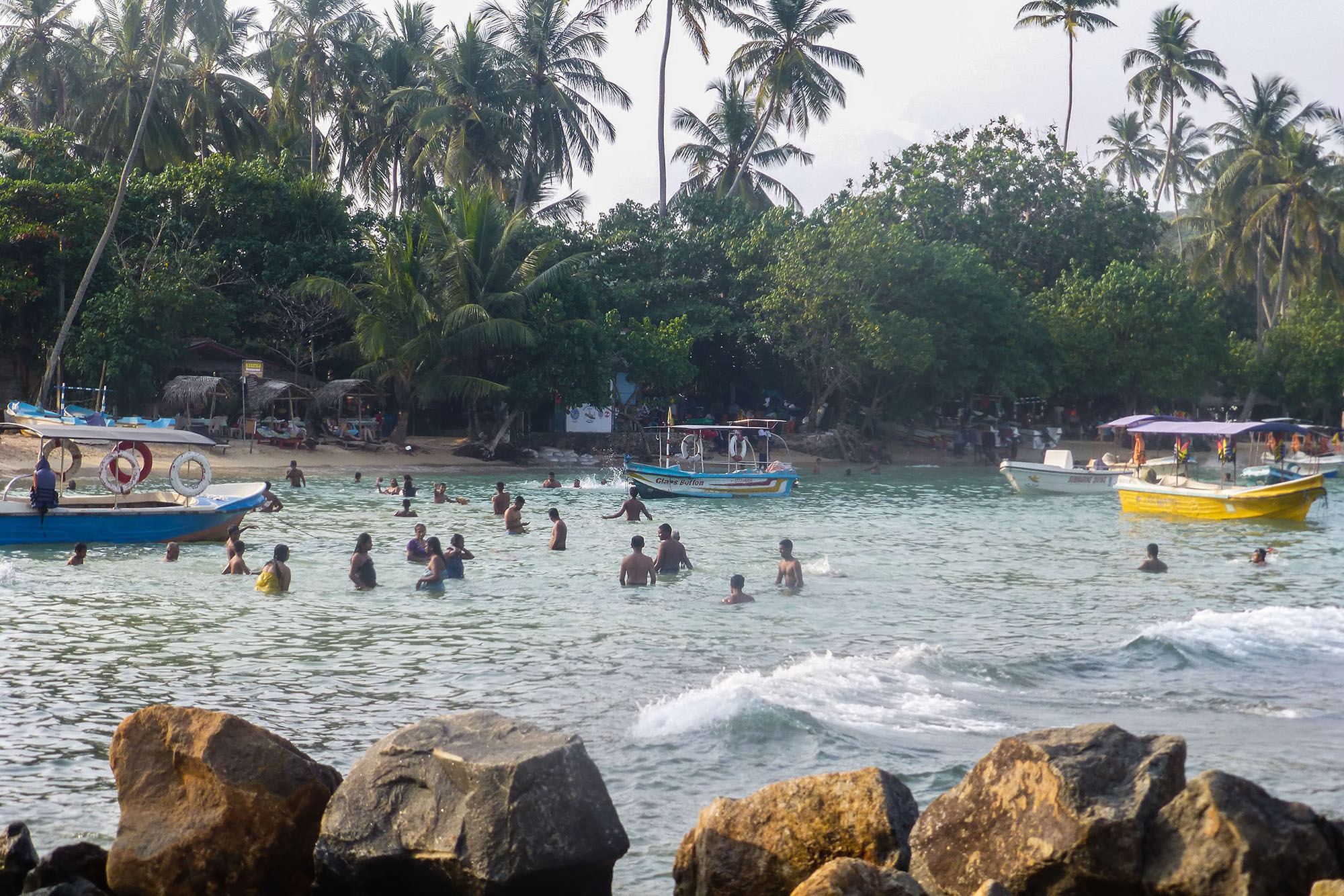
Back in his village, sharing a two-room shack with his parents and siblings, Upul faced a year of unemployment before securing a job that paid just a quarter of his previous salary. Yet, he remained steadfast. “I’m just happy to be alive,” he reflected. “Things could always be worse.”
Despite these setbacks, Upul’s quiet determination and refusal to succumb to despair became the foundation of a hard-earned sense of contentment and the promise of success ahead.
For locals like Upul, who earn a fraction of the income generated by larger businesses in the area, life in Sigiriya is a balancing act. Tourism may bring money to the region, but many villagers work long hours in agriculture or low-paying jobs, struggling to make ends meet. Annual incomes here rarely exceed $3,500, leaving families vulnerable to economic instability and natural disasters like the tsunami that changed Upul’s life forever.
Upul’s $7,000 loan was a lifeline, allowing him to build a home for his family. Yet for many in rural Sri Lanka, access to credit comes at a high cost. Interest rates can be crippling, leaving families trapped in cycles of debt. Coupled with rising food and fuel prices, these economic pressures make daily survival a challenge.
For someone earning a modest income, saving $7,000 to construct a besser block house is an achievement as monumental as Sigiriya itself.
How to Engage with Locals in Sigiriya
- Be Curious but Respectful: Show genuine interest in their lives and traditions, but let them take the lead in sharing personal details.
- Learn a Few Words in Sinhala or Tamil: Even a simple greeting like “Kohomada?” (How are you?) can spark connection and break the ice.
- Share Your Own Stories: Locals enjoy learning about your home country as much as you do theirs. It creates a reciprocal exchange that deepens the connection.
- Offer Help: If invited into a home, lend a hand with tasks like preparing food or carrying items. It’s a wonderful way to bond.
- Be Mindful of Personal Space: Sri Lankans are warm and welcoming but still value privacy. Let the interaction evolve naturally and without intrusion.
A Personal Reflection on Sigiriya Local Life
Spending time with Upul and his family gave me a new perspective on Sigiriya. Beyond the grandeur of the fortress and the curated experiences designed for tourists, there’s a raw, unfiltered reality to life here.
The attitude of locals like Upul is a testament to the spirit of Sigiriya. It’s not just a place of historical significance; it’s a living, breathing community where people face challenges with quiet strength and unwavering dignity.
As I sat on the kitchen floor helping Upul’s family prepare dinner, I realised that the true beauty of Sigiriya lies not in its rock fortress but in its people.
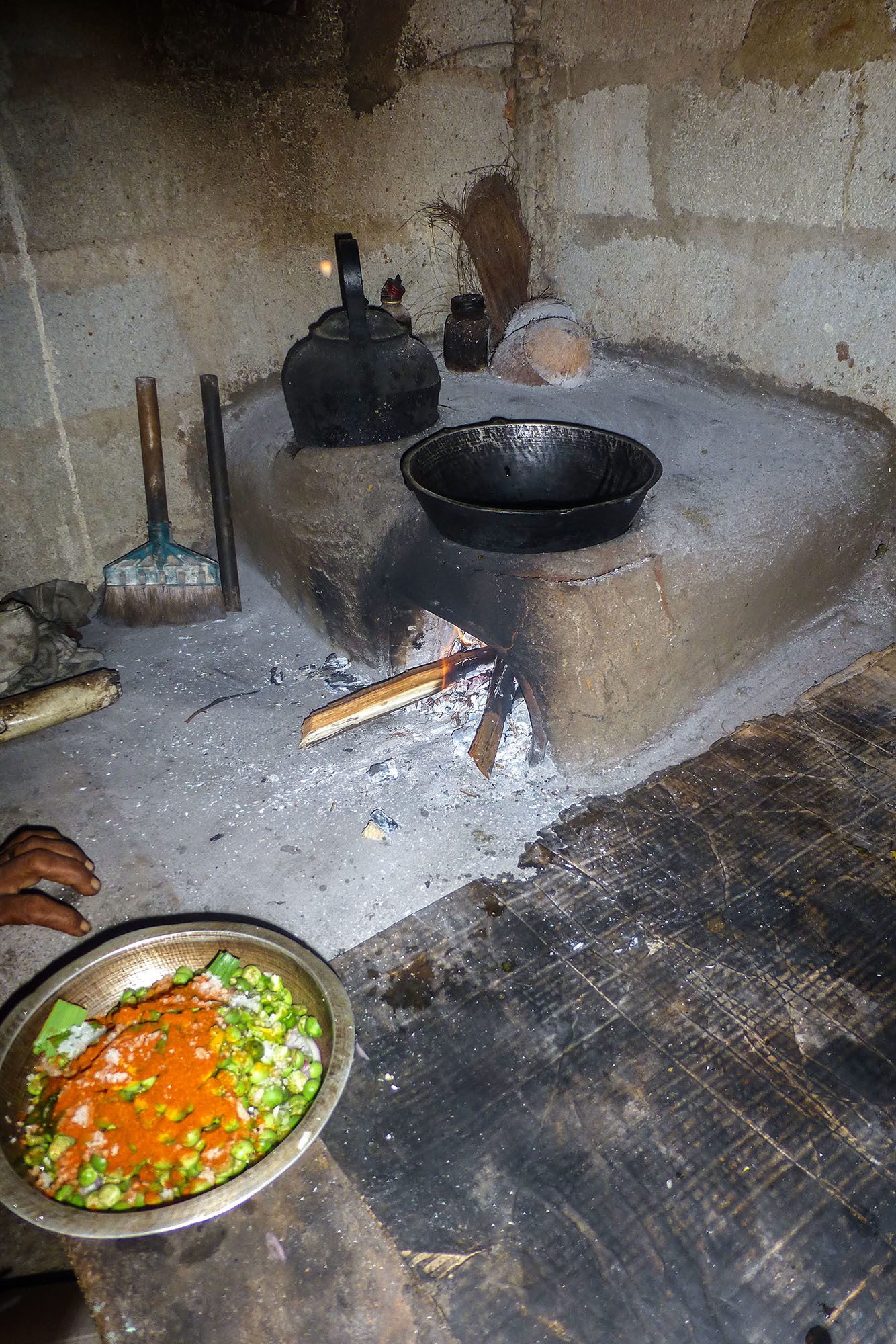
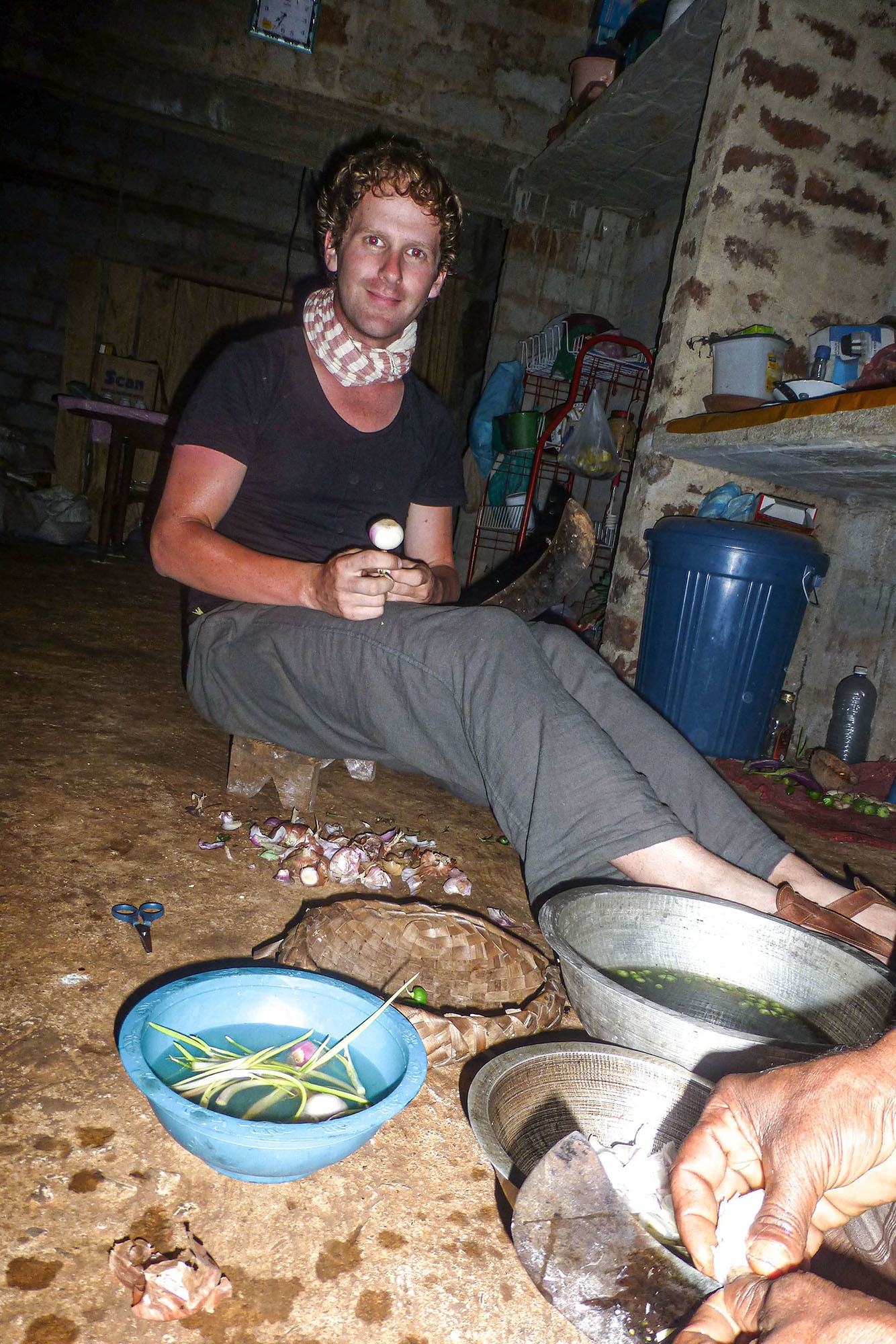
Their stories, their struggles, and their kindness left a mark on me — a reminder of the power of human connection and the importance of giving back where we can.
Things to Avoid in Sigiriya
- Avoid Flashy Displays of Wealth: Flashy clothing or excessive use of technology can make locals feel uncomfortable, especially in poorer areas.
- Don’t Offer Money Directly: While it may seem helpful, giving money to individuals (particularly children) can encourage dependency. Instead, contribute to local businesses or community programs.
- Avoid Public Displays of Affection: Holding hands is fine, but anything beyond that may be considered inappropriate in rural areas.
Staying Aware: Common Scams in Developing Communities
While the hospitality in Sigiriya is genuine and warm, it’s essential to be mindful of common scams, particularly in areas popular with tourists. Developing communities often associate foreign travellers with wealth, and some may exploit this perception.
Here are a few scenarios to watch for:
- Friendly Invitations Leading to Requests for Money or Favours: Sometimes, friendly locals may invite you into their homes, only to later ask for financial help or donations. Trust your instincts, and if you want to give, ensure it comes from a genuine place rather than pressure.
- Guides Offering "Exclusive" Experiences: Be wary of unofficial guides who promise secret spots or shortcuts for a fee but lead you to public locations. Research beforehand or ask for recommendations from trusted sources.
- Sad Stories: Locals may share emotional tales to appeal to your empathy, with the hope of financial assistance. Stay kind but firm in your response, and only help if you feel comfortable and confident in doing so.
- Overpriced Souvenirs or Tours: Vendors and guides may inflate prices for tourists. A little polite bargaining helps, but remember that the difference often means more to them than to you.
- Transportation Overcharging: Always agree on a fare before hopping into a tuk-tuk or private car. Confirming the price upfront helps avoid misunderstandings.
How to Respond:
- Politely decline offers you’re not comfortable with.
- Use phrases like “I’m not in a position to help, but thank you for sharing.”
- Always confirm prices and details upfront for tours or purchases.
Have you visited Sigiriya or connected with locals in Sri Lanka? Share your own experiences and tips in the comments below — I'd love to hear your stories and what made your trip unique.
Final Thoughts: Sigiriya Local Life
Sigiriya’s allure goes far beyond its famous rock fortress. It’s a place where ancient history and modern struggles coexist, where the strength of the community stands tall amid adversity. The quiet dignity of its people, like Upul and his family, are a reflection of Sri Lanka’s cultural richness — a mosaic of ancient traditions, deep spiritual ties, and unwavering communal bonds.
For travellers looking to experience Sigiriya beyond the guidebooks, I’d encourage you to take the time to connect with locals. Whether it’s sharing a meal, exploring hidden waterfalls, or simply listening to their stories, these moments will give you a deeper appreciation for the heart of Sri Lanka.
Every choice you make as a traveller — hiring local guides, dining at family-run establishments, or buying from artisans — directly impacts communities like Upul’s. These small actions help preserve Sigiriya’s unique spirit and ensure that its people’s hospitality and resilience remain a living part of Sri Lanka’s cultural legacy.
And in a world that often prioritises profit over people, those small acts of kindness can make all the difference.










What a wonderful, comprehensive and riveting experience you share here. Especially helpful are the hints and tips. You make us love Upul and his people 🙏👏🩷
Thank you so much, Mandi! Your kind words mean a lot to me. Upul and his family left a lasting impression on me, and I’m so glad I could share their story in a way that resonated with you.